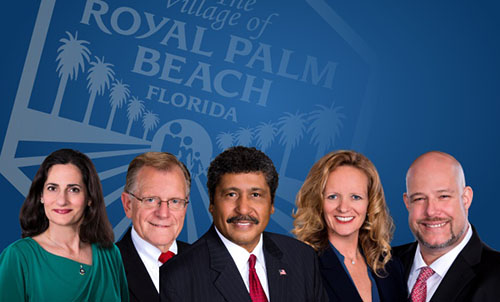The Royal Palm Beach Village Council considered a proposal Thursday, Jan. 18 to allow more children at home-based childcare businesses but, in the end, decided not to support a proposal to allow more than six children at such businesses.
The item included a discussion and consideration of whether to change the village code to allow residential childcare homes to have increased capacity.
Village staff provided a background on the current regulations and options for the council. This issue originally came to the council’s attention at a meeting in December.
Planning & Zoning Director Bradford O’Brien explained that childcare facilities are regulated by the Florida Department of Health. Residential childcare can be classified as a “Family Childcare Home” or a “Large Family Childcare Home,” with the primary distinction being the number of children allowed. The former allows up to six children, and the “large” designation allows up to 12 children. Both types must be licensed and inspected.
“In Palm Beach County, to qualify and become licensed as a Large Family Childcare Home, a provider must successfully operate for at least two years as a Family Childcare Home at the location where they wish to operate as a Large Family Childcare Home,” he said.
Bradford added that village staff did not support any revision to the existing code. “A review of both types of childcare homes within Palm Beach County resulted in less than 5 percent of them being Large Family Childcare homes. Large Family Childcare Homes is not the norm in Palm Beach County, and the village’s code is consistent with other municipalities. Staff feels that large childcare homes are more closely related to a commercial use.”
Martha Smith, who brought up the issue at the December meeting, returned to address the council. She moved to Royal Palm Beach after operating a Large Family Childcare Home for more than 20 years and was caught off guard when she could only serve six children instead of 12, as she had done in the Pahokee area.
Most of the council was not swayed. While Councilman Richard Valuntus admitted he would have used a residential childcare facility when his children were young, Vice Mayor Jan Rodusky said she pulled her own children from a large childcare home so they could receive more individualized attention. Rodusky had researched Smith’s business history and advised that she be sure to charge the full rate allowed, but she did not support the idea of increasing the facility’s capacity.
Village Attorney Keith Davis said that once a large childcare facility is allowed, it would be hard to shut down.
“If the village was to change the code and allow large care to come in lawfully, and then the village decided this is not working, it would stop any more from coming in, but the ones there would be able to remain,” Davis said.
He also clarified that the two-year rule was site specific and would still need to be met prior to any large childcare homes being licensed.
Valuntus was open to adopting the county ordinance, but his motion was not successful.
Mayor Fred Pinto apologized to Smith that they were not able to support her request.
“We did do the research. I understand the point you were making about the need. We had to review where we are today, and that rationale has not changed,” Pinto said. “I don’t see us changing our ordinance from anything than what it is now. I know that’s not what you want to hear, but we did do our due diligence. The question is do you want to continue to operate in Royal Palm Beach with six children.”
Also at the meeting, Nathan George, the long-range transportation plan (LRTP) coordinator for the Palm Beach County Transportation Planning Agency, provided an update to the council on his work.
Royal Palm Beach was the first municipality to receive the updated presentation, which is scheduled to be shared across the county. The plan has a 25-year horizon and, as required by the federal government, is updated every five years. Currently, the Transportation Improvement Plan (TIP) includes $4.1 billion to fund projects stretching from Palm Beach County to Miami-Dade County.
George explained that the goals of the plan are to be safe, efficient, connected, resilient and multimodal.
“We’ve used those goals to screen all of the projects that go through our project submittal,” he said. “Currently, we are in the ‘needs assessment’ phase. We want folks to be talking to their local leaders. We hear the best input from the members on our board and committees.”
The next LRTP workshop is open to the public and scheduled for 3 to 5 p.m. on Friday, Jan. 26 at the Royal Palm Beach branch library at 500 Civic Center Way. To find out about future workshops, and how to register to attend or participate in the needs assessment survey, visit www.palmbeachtpa.org/lrtp.
“We’ve had a handful of workshops, and some 550 people responded to the survey on the web site,” said George, adding that the site’s content map is a way for residents to share concerns and ideas for potential new projects, such as a need for a traffic light, and not for immediate or emergency issues.
Pinto said he hopes the public will participate in the survey.
“I’m very confident you’re going to get a tremendous amount of feedback across the county with your tour and the workshops you’re going to be holding,” Pinto said. “I think that will ultimately provide us a much richer base of information and perspectives and insights from our community and across the county on our transportation issues and needs.”








